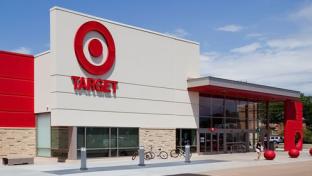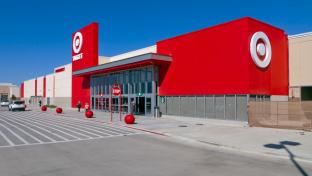Target Posts Best Comps Growth in More Than a Decade
Target Corp. reported fourth-quarter comparable-sales growth of 5.3 percent on traffic growth of 4.5 percent. Store comps for the quarter were up 2.9 percent, while digital comps soared an impressive 31 percent, contributing 2.4 percentage points to comps growth. According to the retailer, stores fulfilled nearly three quarters of its Q4 digital sales.
For both the fourth quarter and full year, Target experienced robust comps growth and market-share gains across all five of its core merchandise categories.
Full-year 2018 comps rose 5 percent — Target’s strongest showing since 2005. For the year, store comps grew 3.2 percent and digital comps increased 36 percent. According to the company, 2018 was the fifth straight year that its digital comps have grown more than 25 percent.
Additionally, Target’s full-year GAAP earnings per share (EPS) from continuing operations of $5.50 and adjusted EPS of $5.39 marked new all-time highs for the company.
“We’re very pleased with our fourth-quarter performance, which capped off an outstanding year for Target,” noted Brian Cornell, chairman and CEO. “We have been driving an ambitious agenda to transform our company, evolve with our guests and drive strong growth. On every count we’ve been successful, and as we enter 2019, we will continue to lead the industry by adapting, innovating and delivering more for our guests and shareholders.”
The company’s Q4 total revenue of $23 billion was essentially flat from last year. Its operating income was $1.12 billion in Q4 2018, versus $1.13 billion in 2017. According to Target, the year-over-year comparisons for both total revenue and operating income were due to the impact of an extra fiscal week in Q4 2017.
Target’s Q4 operating income margin rate was 4.9 percent in both 2018 and 2017, while its Q4 gross margin rate was 25.7 percent, compared with 26.1 percent in 2017. The company attributed this decline to higher digital fulfillment and supply chain costs, partly offset by the benefit of merchandising strategies.
The retailer’s strong results were the result of its focus on capital improvements and online retailing, according to one observer
“Target turned in a very good quarter during what has been an uneven holiday season for many retailers,” said Andrew Lipsman an analyst at New York-based market research firm eMarketer. “Strong same-store sales growth suggests Target’s investments in store upgrades are paying off, while its ecommerce momentum – which benefited from shoppers’ increasing reliance on click-and-collect – is another very positive sign. Going forward, we’ll be keeping an eye on whether Target’s rollout of additional private label offerings can meaningfully boost the bottom line amid a less certain economic backdrop.”
Minneapolis-based Target operates more than 1,800 stores. The company is No. 13 on Progressive Grocer’s 2018 Super 50 list of the top grocers in the United States.






